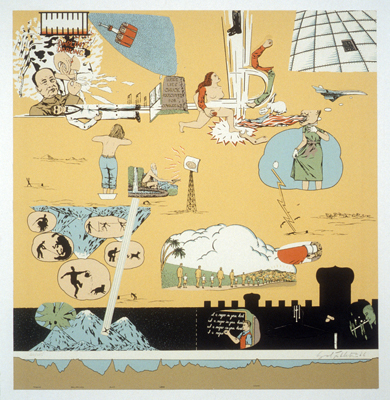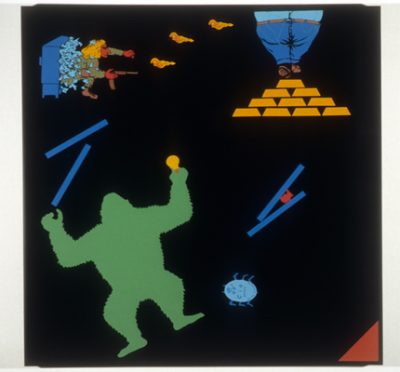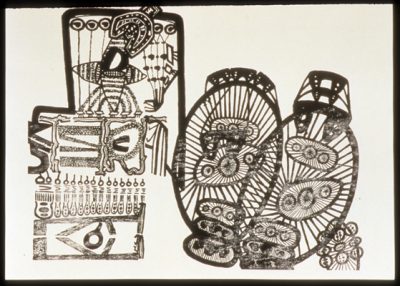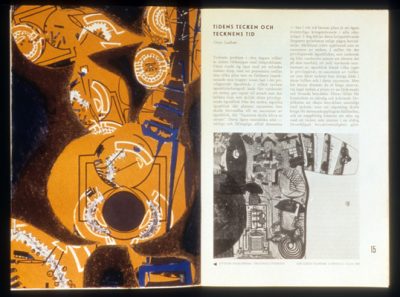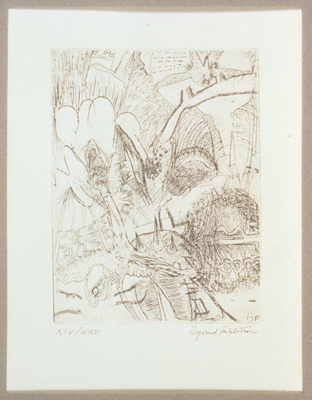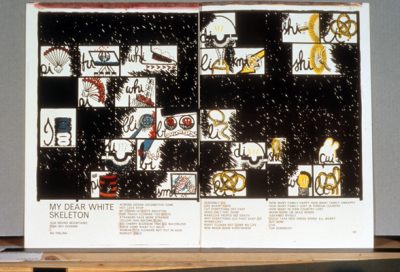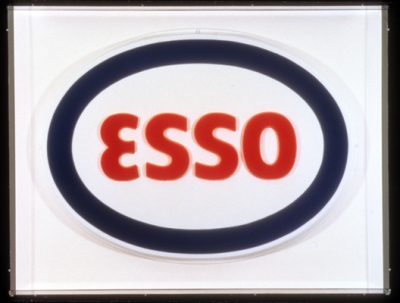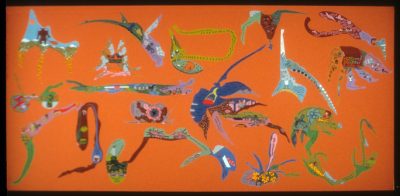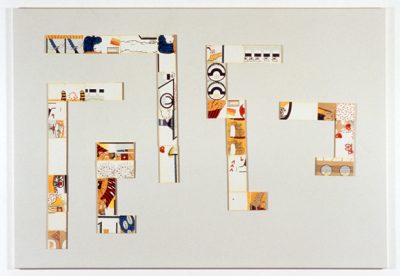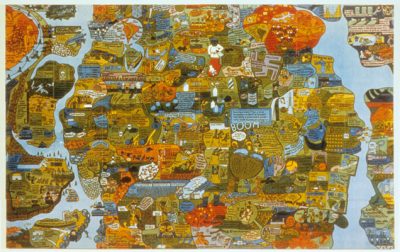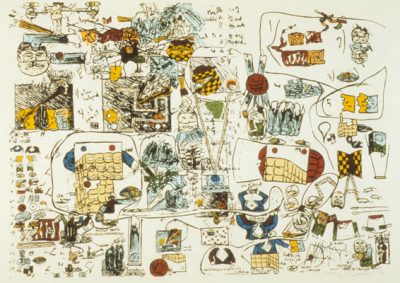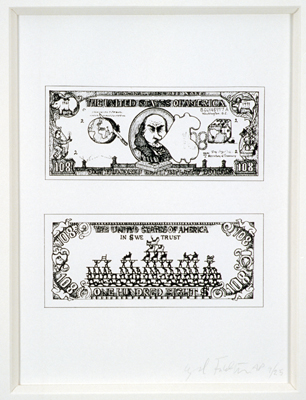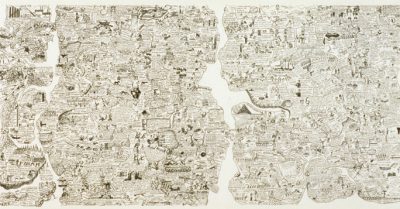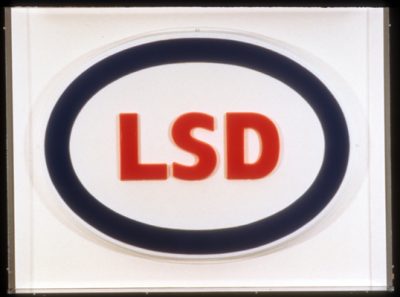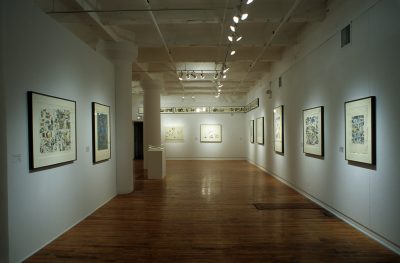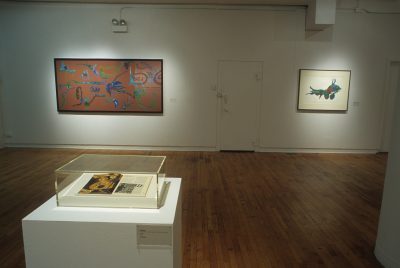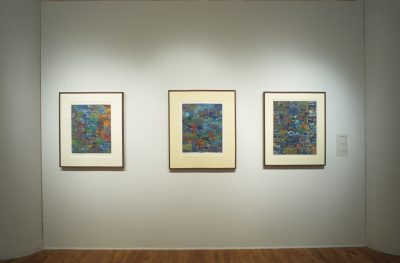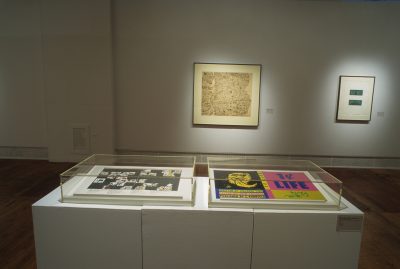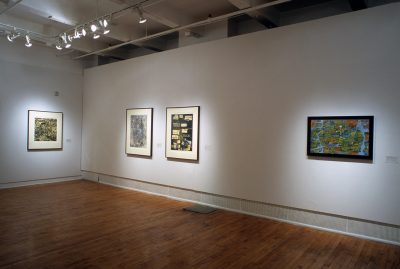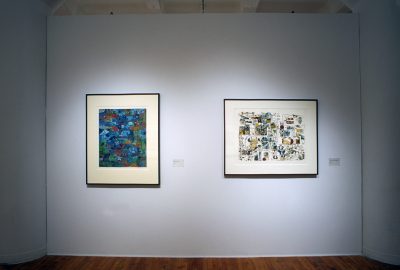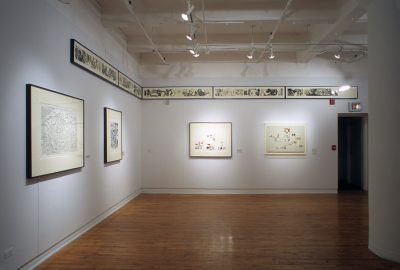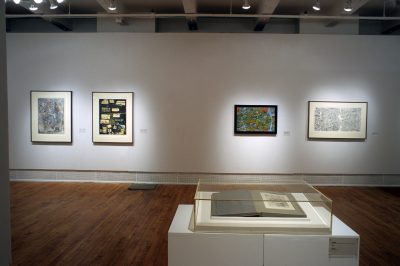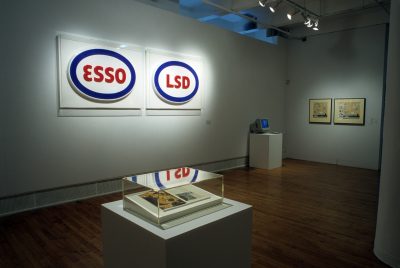Exhibitions
ABOUT THE EXHIBITION
Öyvind Fahlström: The Complete Graphics and Multiples was a comprehensive survey of Öyvind Fahlström’s graphic work, including twenty-seven prints as well as multiple editions in three-dimensional object and book format. Vibrantly colored, and densely packed with cartoon imagery and text, Fahlström’s prints bring to life dramas of global politics, as well as reveal historical truths about political, social, and economic issues. Fahlström described his strategy as “orchestrat[ing] data, so people will – at best – both understand and be outraged.” Through a free-form recombination and morphing of his source material, Fahlström revealed obscured social machinations. This exhibition was organized by Gallery 400 at the University of Illinois at Chicago and Bank One, Corporation and traveled to six venues throughout the country.
Born in São Paolo, Brazil in 1938 of a Norwegian father and Swedish mother, Öyvind Fahlström led a peripatetic life that included years in Sweden, Italy, France, and New York. During the summer of 1939 he traveled to Sweden to visit his grandmother and was stranded by the outbreak of World War II. He attended school there until his parents returned to Stockholm in 1948. Fahlström received his degree in art history and archeology from the University of Stockholm in 1952. After receiving a grant from the Swedish-American Foundation he moved to New York in 1961, where he became immediately involved with a group of artists, including Robert Rauschenberg, Jasper Johns, and Robert Morris. Fahlström died in Stockholm in 1976.
Öyvind Fahlström was a visual artist, concrete poet, journalist, playwright, critic, filmmaker, and activist. Inspired by an eclectic range of sources, including the Surrealists, pre-Columbian manuscripts, modern Mexican art, John Cage, jazz, and underground comic artists like Crumb, Fahlström utilized diverse media, producing works in film, performance, installation, sculpture, prints, and painting. Though often classified as Pop because of his use of popular imagery, the political narratives in Fahlström’s work align him more with the ambitions of the Conceptual artists. A multi-media artist, Fahlström made use of many forms of distribution, including exhibitions, books, poetry, magazines, film, opera, television, and radio. He worked in the fields of painting, graphics, sculpture, film, comics, happenings, and radio theater. He mixed all of these areas as well as creating forms of his own.
Fahlström’s main interest was in the political implications of contemporary art. Fahlström believed in art as a force for changing consciousness and the world. His works are at once political fantasies and the result of meticulous research. He scrupulously followed economic and socio-political developments around the world, responding to ever-shifting global situations. Central to his work is a synthesis of psychodrama, truth of history, game theory, maps, puzzles, performance, and installations. His interests in language, journalism, and game-playing provided a foundation for artworks which typically invite viewer participation and incorporate variable possibilities for resolution. The works’ visual and textual openness helps them to avoid a stern didacticism. They are poetic as well as critical.
Fahlström discussed his process in “Sausages and Tweezers – A Running Commentary” (1966):
“My basic interpretation of the concept of a game – and my artistic use of it – is not evolved from the strategy theories of von Neumann, Hermann Kahn, etc. I am more inclined to refer to Cage’s method of composition, and psychologists such as T. Leary and E. Berne. But above all, the idea of a game for me is a simple, fundamental out look on life, dating back to the time of my Concrete Manifesto (1953).”
Öyvind Fahlström was greatly under-recognized during his lifetime; however, critical interest in his work has recently exploded on the international and national scene, as demonstrated by the current retrospectives and catalogues in progress in Europe and his selection for inclusion in Documenta X, the world’s most prestigious art exposition (1997). Fahlström is viewed by many to be a progenitor of Pop Art, Installation Art and genres of political art. His work, critically received as avant·garde and socially responsible, has influenced generations of younger artists.
This exhibition traveled to six other educational institutions: the Haggerty Museum of Art (Marquette University), Selby Galleries (Ringling School of Art and Design), Gibson Art Galleries (State University of New York), The Mesaros Galleries (University of West Virginia), Herron Gallery (University of Indiana – Purdue), and Arizona State University Art Museum.
The exhibition was accompanied by 20-page, black-and-white and color catalog, which is currently unavailable.
ARTISTS
Öyvind Fahlström
SUPPORT
Oyvind Fahlström: The Complete Graphics and Multiples is made possible by Bank One, the School of Art and Design, the College of Architecture and the Arts, and supported in part by a grant from the Illinois Arts Council, a state agency, Arizona State University Art Museum, Haggerty Museum of Art, Herron Gallery, The Mesaros Galleries, Roland Gobson Galleries, and Selby Gallery.


